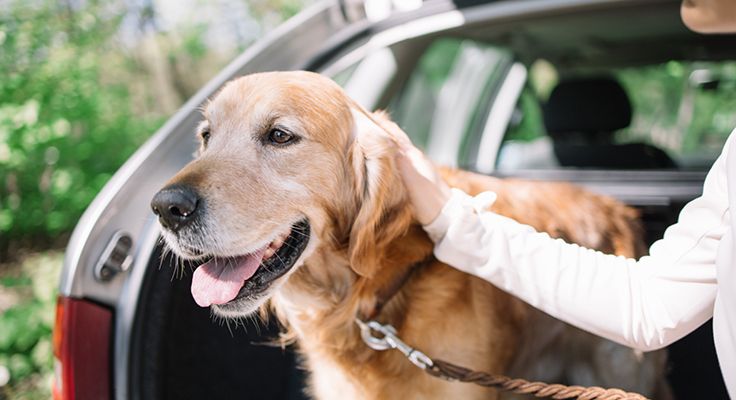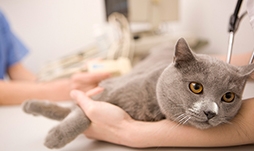Whether it’s a road trip, beach day, or a routine visit to the vet, your dog is likely to need to travel in the car.
Keeping your dog secure on the journey is not only important for their own safety, but also for other passengers and road users.
A dog with free reign of a moving vehicle is extremely dangerous. As it’s also against the highway code, there could be serious repercussions for the pet owner.

Dog safety in the car and your insurance
Keeping your dog safe in the car can have a direct impact on your ability to make a claim on your insurance policies.
In the event of an incident on the road, your insurance could be invalidated if your dog is not found to be secured properly. This means that damage to your vehicle, or that of another motorist, may not be covered on your car insurance. You may also be unable to claim on your pet insurance for any injuries to your dog.
Why is dog safety in the car so important?
A free-roaming dog in a car can distract the driver, block your view, and get in the way of the controls. This results in dangerous driving and a higher chance of an incident happening on the roads.
In a road accident, a free-roaming dog can be thrown around the car. This means that during a collision or an emergency stop, your family dog can cause serious injury to themselves and other passengers, resulting in significant damage.
What is the UK law on dogs travelling in cars?
Rule 57 of the Highway Code states “When in a vehicle make sure dogs or other animals are suitably restrained so they cannot distract you while you’re driving or injure you, or themselves if you stop quickly. A seat belt harness, pet carrier, dog cage or dog guard are ways of restraining animals in cars."
Besides the safety issues, an incident with a free-roaming dog onboard has other consequences. It can lead to fines, penalty points on your licence, or even a driving ban. It can also invalidate your car or pet insurance.
How to travel safely in the car with dogs
It is simple to keep your dog safe and comfortably restrained in the car. There are various options to choose from, but before you decide, consider the following:
- Your dog’s size and age
- How confident they are in cars
- Whether they like to see you
- If they tend to move about
- If they like to lie down and relax
- The space in your vehicle
The following options could be good for dogs of all shapes and sizes.
Harness seat belt
Suitable for: relaxed, well-behaved dogs.
This secures your dog with a strong lead. There is a clip on one end for the harness, the other end clicks into the seat belt buckle.
Crates and carriers
Suitable for: mucky dogs and puppies.
A crate can go in the boot or the back seat, keeping your dog in the same spot for the journey. Make sure they can stand up and turn around.
Boot guards
Suitable for: dogs that like to see you or move and stretch.
Bolted to the boot floor, boot guards protect your vehicle from mud and mess. Your dog will have room to move, without being able to come forward.
Back seat hammock
Suitable for: older dogs who need to lie down and stretch.
Non-slip hammocks offer a protected space across the back seats for your dog to relax. They connect between the front and back headrests.
Is it legal to leave a dog in a car alone?
It isn't against the law to leave your dog alone in the car but consider if it's necessary and if your dog's health is at risk.
On a warm day, it’s dangerous for your dog’s health to be alone in a car. They can suffer heatstroke and it could be fatal.
If you ever see a distressed dog in a car alone, the RSPCA has shared some useful tips on how you can help.
Insuring your dog
A secure dog in a car helps to prevent distractions and accidents. If you’re not following the rules, your car or pet insurance could be invalidated, which could mean you won’t be able to claim if you have an accident on the road.
Dog insurance could be there when you need it most, explore our different levels of cover to find insurance that suits your needs.



